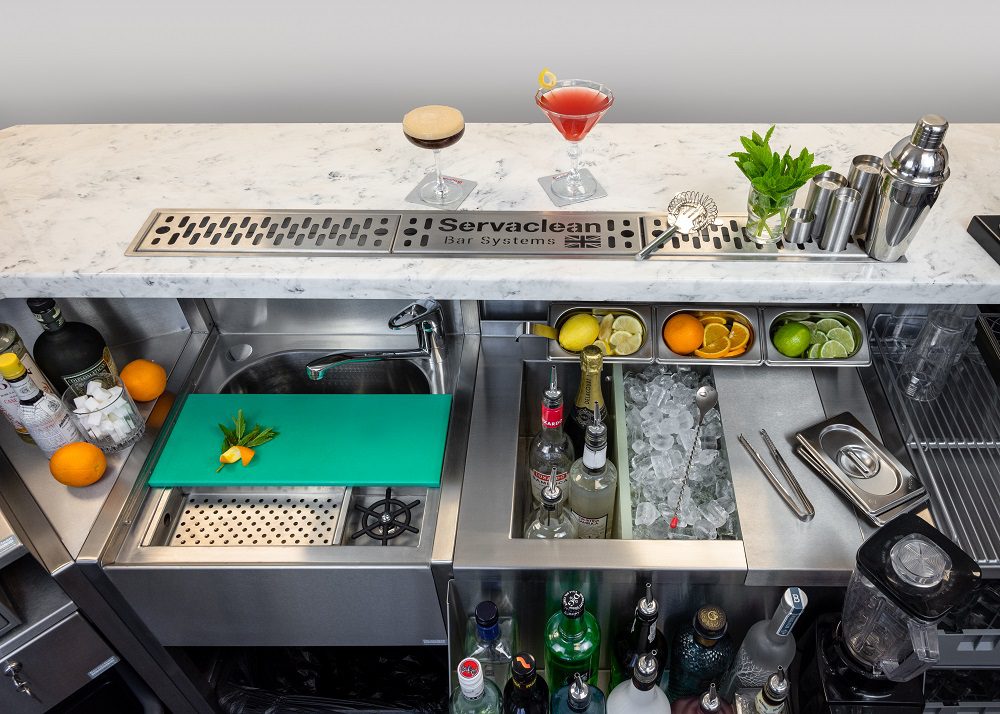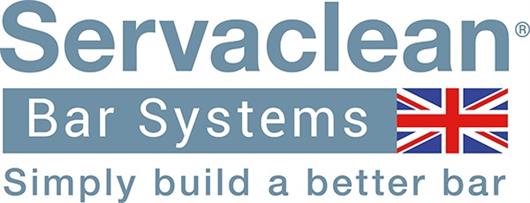 Add My Company
Add My Company
Is Stainless Steel Sustainable?

Sustainability and environmental impact continue to be leading and driving factors across every industry in the 21st century. The same is true for stainless steel production, with more companies and organisations concerned with the impact of the materials they use in manufacturing.
Stainless steel, a versatile and widely used alloy, raises questions about its sustainability credentials.
Servaclean has broken down all the main factors that need considering when understanding just how sustainable stainless steel truly is.
It is an essential product in all Servaclean bar systems and one that needs to consider.
Understanding Stainless Steel
Firstly, it is necessary to understand what stainless steel is and how it’s produced.
Stainless steel is an iron-based alloy that contains a minimum of 10.5% chromium, which forms a protective layer on its surface.
This layer, known as chromium oxide, gives stainless steel its corrosion resistance, making it suitable for a variety of applications, ranging from kitchen appliances and construction materials to medical instruments and transportation.
Depending on the grade of the stainless steel, other materials may be present in it. These can include carbon, nickel, titanium, aluminium, and molybdenum. These elements, among others, usually comprise of around 1% of the overall structure.
The above elements combine to create a corrosion-resistant, non-reactive, durable, recyclable metal.
Stainless steel is found across all bars, kitchens, hospitals and other environments because it is easily cleaned and sterilised, making it perfect for reusing over and over again.
Stainless Steel Production Process
There are two main ways in which stainless steel is produced – from iron ore based primary raw material or from recycled material.
Stainless steel production from iron ore involves several stages which include mining of raw materials, smelting, refining, and shaping.
The extraction of raw materials, such as iron ore, chromium, nickel, and other elements, does have an environmental impact due to energy consumption and resource depletion.
However, the stainless steel industry has made significant progress in reducing its environmental footprint and around 80% of new stainless steel is made from scrap and electricity (a process that can be completely fossil-fuel free) according to the 2018 International Stainless Steel Forum.
Technologies like energy-efficient furnaces, recycling of process gases, and waste heat recovery systems have been implemented to minimise energy consumption and emissions. What were once waste products, such as molten slag, now get turned into asphalt for roads by the construction industry.
Stainless Steel Durability
As mentioned in the understanding stainless steel section, one of stainless steel’s notable attributes is its exceptional durability.
Stainless steel products have a long lifecycle and can withstand harsh conditions without corroding, which reduces the need for frequent replacements. Product longevity is a powerful first step to improving commercial sustainability.
Additionally, stainless steel is highly resistant to wear and tear, making it a sustainable choice for applications that require longevity, such as building infrastructure or kitchen utensils.

Stainless Steel Recyclability
The recyclability of stainless steel is a significant advantage in terms of sustainability.
Stainless steel is 100% recyclable, meaning it can be recycled repeatedly without losing its inherent properties or quality.
At the end of a product’s life cycle, stainless steel can be collected, sorted, and melted down to produce new stainless steel products.
Stainless steel is infinitely recyclable therefore significantly reducing the demand for virgin materials and energy consumption, in fact very little stainless steel ends up in landfill or discarded in the environment.
Stainless Steel Environmental Impact
While stainless steel production from raw materials does have its environmental implications, stainless steel manufactured using scrap metal certainly can be considered environmentally friendly.
The extraction of raw materials, particularly mining, can contribute to habitat destruction, water pollution, soil degradation and the production of greenhouse gases.
However, it’s worth noting that the stainless steel industry has taken significate steps to mitigate these impacts through reuse of waste materials and filtering and reusing of water in the process, Now 80% of stainless steel manufactured is from recycled products.
Stainless Steel Biodegradability
Even though stainless steel is 100% recyclable, it is not biodegradable.
Stainless Steel is manufactured to stand the test of time, and left to its own devices, it could last for hundreds, if not thousands of years – this is why recycling is important.
Should it end up in landfill or illegal dumped we know it will not result in any toxic run off or cause any harm to wildlife other than being there.
So, is stainless steel sustainable? the durability and 100% recyclability mean it is highly sustainable. More often than not it is made from recycled materials and will never lose its quality.
Servaclean Bar Systems are manufactured from 304 grade stainless steel providing the best quality, hygiene, and product longevity. The unique interchangeable modular bar system allows Servaclean bar counters to be reconfigured to changing trend and new operational requirements saving our customers money and the need to supply and manufacture new materials.
A Servaclean bar is a bar for life.
At Servaclean, whether you require a full bar system, mobile bar or portable units for indoor or outdoor use, we have a solution. To find out more about our stainless steel bar equipment, contact us today to speak to our friendly team!
For more information on Is Stainless Steel Sustainable? talk to Servaclean Bar Systems

